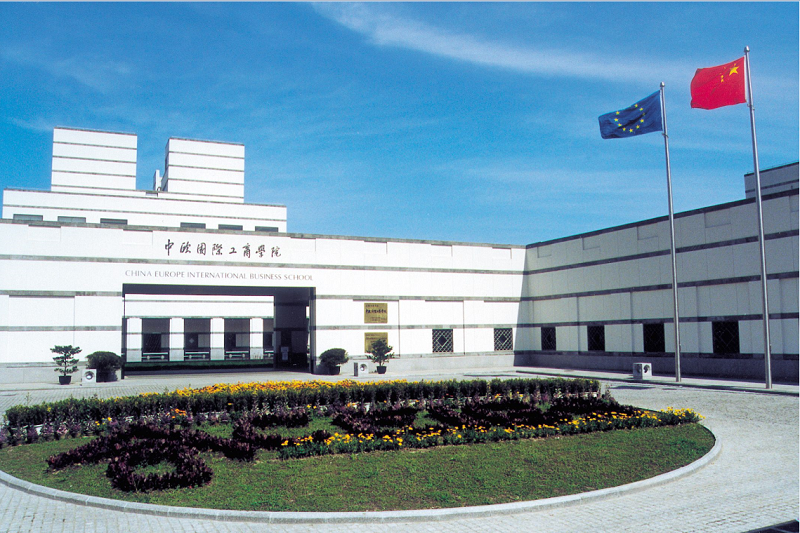– Business School and the Belt and Road Initiative
As China and the world are celebrating the 10th anniversary of the Belt and Road Initiative (BRI), the trajectory of some business schools can tell us a lot about the shift of the international order toward multilateralism. These institutions can be seen as backbones of the global economy and its working ethos, like the China Europe International Business School (CEIBS) co-founded by the Chinese government and European Union (EU) in 1994, with Spanish professor Pedro Nueno as one of its co-founders and long-time president. With campuses in Shanghai, Beijing, Shenzhen, Accra in Ghana, and Zurich in Switzerland, the school embodies BRI’s spirit and trajectory. It has fostered 200,000 executives and over 27,000 alumni globally. The school’s 120 faculty members – two-thirds of whom are from overseas – represent more than 10 countries and regions worldwide and bring a wealth of experience from teaching, research and industry.

The CEIBS campus in Shanghai, China. Photo courtesy of Augusto Soto
It is no surprise that CEIBS has been ranked number one in Asia in the Financial Time’s ranking of global MBA programmes for seven consecutive years, and among the top 5 on its global EMBA list for five consecutive years.
During his long career Nueno has compared his launch of CEIBS and of various business schools around the world to "building bridges of peace." His efforts to expand China’s global business presence put him on the invitation list of a meeting with newly elected CPC Central Committee General Secretary Xi Jinping in December 2012. The event was attended by 20 foreign experts and Nueno gave the first speech. He discussed other countries’ perceptions of the Chinese government and shared his opinions about China’s priorities.
In 2007, Nueno received the prestigious Magnolia Gold Award, presented to foreigners by the Shanghai government. In 2009 he was presented the Friendship Award – the highest award by the Chinese government to “foreign experts who have made outstanding contributions to the country’s economic and social progress.” And in 2014, Beijing presented him with an outstanding contribution award in recognition of his 30 years of work towards advancing the country’s education.
The CEIBS’s co-founder summarized a big part of his real-life experience in the book Thank You, China: China's Influence in the World is Decisive in the 21st Century. It was first published in Spanish in 2017 and with a subsequent edition in English, in which Nueno explains why the world should be grateful for China’s contribution to many fields, including technological development, the establishment of new trade routes, and the strengthening of services such as healthcare, specialized tourism and innovation in banking and financial services. In short, it mainly focused on the factors that explain how the efforts of 1.4 billion people contributed to a third of the world's economic growth. The book argues that projects such as BRI have contributed not only to generating economic opportunities, but also to bringing peace and stability to parts of the world that have historically been neglected by foreign investment.
For 29 years, CEIBS has grown in tandem with the local economy, and its focus in the future will still be on innovation, transformation, and globalization of the Chinese economy, in its own institutional words, “in order to facilitate global economic co-operation.”
Among its star professors, CEIBS has had the former Prime Minister of Italy and former President of the European Commission, Romano Prodi, as well as Dominique de Villepin and Jean Pierre Raffarin, former Prime Ministers of France. On the Chinese side, the list of personalities is much longer. Among VIP visitors we find former High Representative for the Common Foreign and Security Policy of the European Union, Javier Solana, former European Council President, Herman Van Rompuy, and the kings of Spain (twice), among several personalities including top global innovators and entrepreneurs.
CEIBS main headquarters in Pudong New Area, Shanghai, are a two-hour bullet-train’s distance from Yiwu, the Yixinou China-Europe freight train terminal in east China’s Zhejiang Province, a mammoth flagship terrestrial project of the BRI, connecting Yiwu with Spain’s Madrid. From Pudong one can appreciate the skyline that mirrors the strength of China’s modernization: the Shanghai Tower, 632 meters high, is near the 492-meter-tall World Financial Center of Shanghai. The Oriental Pearl TV Tower reaches 468 meters with the Jin Mao Tower climbing 420 meters.
When Nueno arrived in China in 1983, none of this existed. Pudong of Shanghai and the city of Yiwu in Zhejiang were not associated with any grandiose world-class structures or any great visible signs of internationalization. Indeed, the greatest material transformation pursued by a country in human history had just begun five years prior to his arrival.
Looking into BRI and CEIBS, we can find important parallelisms. Like BRI, management education is a global endeavour. CEIBS has made efforts to combine Chinese practices and traditions with modern management skills while emphasizing internationalization in the school's teaching, research and business practices. By the same token, BRI is permanently adapting and adjusting to local conditions in each continent. Over 150 countries and more than 30 international organizations have so far signed 200-plus cooperation documents with China for the joint building of the Belt and Road.
The prevailing idea during the Tianjin Davos Forum held in June was that a government should not overreach the concept of risk lest it be turned into an ideological tool. Or in other words, the international community should try to avoid the politicization of economic issues. In my understanding that means paying more attention to business schools in general. In this sense, the pioneering spirit and development of CEIBS stands out. And it also serves as a tribute to the 10th anniversary of the Belt and Road Initiative.
___________